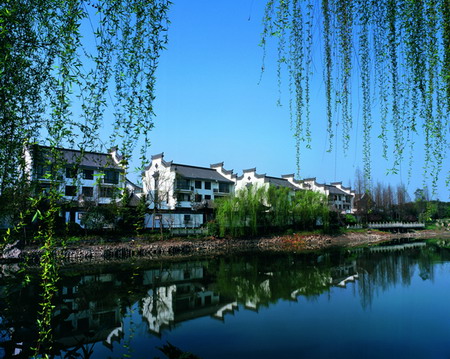Wenjiang: True model of ‘Better City, Better Life’
Updated: 2010-04-30 16:08
|
|||||||||||
Agriculture has flourished in the area for more than 2,000 years, making it one of the best places to live in China throughout its history. The nearby Dujiangyan Dam built at the upper reaches of the Minjiang River during the Warring States Period (475 BC-221 BC) is the nation’s greatest ancient water control and irrigation system, and one that still works today
The district is still a shining example of good living and business environment as a result of well-positioned plans by local authorities for urban construction and economic development.
While most Chinese cities, especially western cities, are attracting investors to launch big manufacturing projects, Wenjiang chose a different path.
As the district covers only 277 sq km, authorities didn’t think it has enough space to host big production facilities. Manufacturing projects also inevitably cause pollution, so planners turned their sights to the service industry to augment traditionally prosperous agriculture.
And the approach to agriculture is totally different from decades ago. Planners don’t want to develop grain-intensive production on such a small piece of land, so they decided to grow specific varieties such as flowers and vegetables to meet the demand of Chengdu and other neighboring big cities.
The district now has more than 8,000 hectares of flower farms, about one-third of Sichuan’s total.
Quality, rather than quantity, is emphasized, with “organic and pollution-free” the buzzwords.
Living environment
 |
|
Many of the residences in the area are built in traditional style — two or three-story with white walls and grey roof tiles. |
As with many areas in China, Wenjiang district is in an inevitable process of rapid urbanization.
In 1985, the urban area of Wenjiang was less than 2 sq km, with about 30 streets. Last year, the urban area reached 28.6 sq km, with more than 150 streets and 173,000 residents.
Yet avoiding problems from rapid urbanization such as a worsening ecology and deteriorating living conditions is a top concern of the local government.